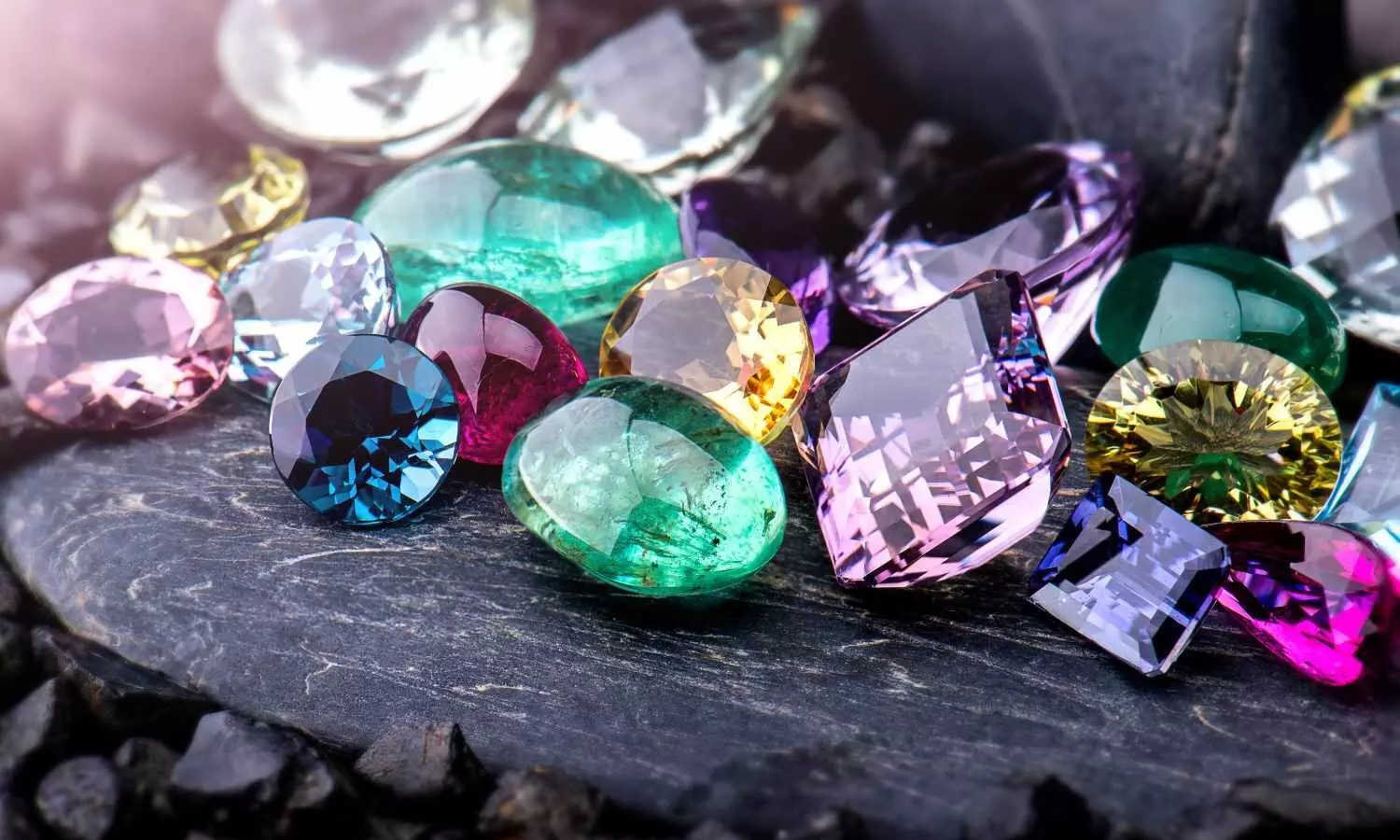The glitter of India’s Gem and Jewellery Market
The glitter of India’s gem and jewellery market reveals remarkable growth, world-class craftsmanship, and evolving consumer trends—highlighting its global appeal and economic significance.
The glitter of India’s Gem and Jewellery Market

India’s gems and jewellery market is poised for robust growth, projected to reach $128 billion by 2029, growing at a CAGR of 9.5%, according to 1Lattice’s latest report, Glimmers of Growth. This surge is driven by rising disposable incomes among the middle class, growing demand for certified and branded jewellery, and increased adoption of digital retail platforms. Gold continues to dominate the market, accounting for 86% of the overall share.
The India gems and jewelry market size reached USD 96.90 Billion in 2024. Looking forward, IMARC Group expects the market to reach USD 227.66 Billion by 2033, exhibiting a growth rate (CAGR) of 9.20% during 2025-2033. The market is driven by rising disposable incomes, increasing consumer preference for gold and diamond investments, and growing demand for customized and heritage designs. Digitalization, e-commerce expansion, and lab-grown diamonds are reshaping purchasing trends, while government initiatives and export opportunities further fuel the market growth.
The report noted that government initiatives such as reductions in gold import duties and mandatory hallmarking have boosted consumer confidence and affordability. The rise of online retail, with virtual try-on tools and digital marketing strategies, is reshaping consumer engagement, especially among younger demographics.
Lab-grown diamonds (LGDs) have emerged as a key growth driver within the sector. The Indian LGD market is projected to reach $1.2 billion by 2033, growing at a CAGR of nearly 15%. Exports of LGDs have grown eightfold since FY21, and India now contributes around 15% of global LGD production, the report states. However, the lack of domestic HPHT machine fabrication presents an opportunity for investment to establish a full-fledged supply chain. LGDs are increasingly favoured for their affordability, ethical sourcing, and environmental benefits, aligning well with global ESG goals.
The report also maps major jewellery manufacturing clusters across India, including Surat, Mumbai, Jaipur, Thrissur, and Coimbatore, each specialising in distinct styles and techniques. Consumer preferences vary by region, age, gender, and spending behaviour, with a notable shift towards minimalistic, personalised, and sustainable jewellery.
Despite its promising outlook, the industry faces several challenges, including volatile gold prices, high labour costs, fragmented inventory systems, and the slow adoption of advanced retail technologies. Nonetheless, India’s position as a global leader in both natural and lab-grown diamond processing, supported by favourable policy frameworks and rising international demand, sets the stage for sustained growth, 1Lattice said.
To capitalise on this momentum, the report suggests that industry players should enhance transparency through certification, invest in technology, and tap into global trade opportunities while promoting jewellery as both a fashion statement and a long-term investment.
Consumers in India are shifting towards heritage-inspired and customized jewelry, which is a blend of tradition and customization. The demand for intricate craftsmanship, temple jewelry, and vintage pieces with cultural significance is on the rise. Additionally, there is growing interest in customization services, including personalized engravings, modular jewelry, and bespoke bridal collections. The trend is fueled by an increasing appreciation for regional craftsmanship and a need for unique jewelry that reflects individual style. Jewelers are combining regional themes and hand-crafting methods to meet niche consumer demand. The trend towards bespoke jewelry also indicates increasing disposable income and shifting consumer aspirations, including propelling design creativity and material choice.
The Indian Gems and Jewellery industry is one of the fastest growing segments in the Indian economy with an annual growth rate of approximately 16 per cent. The domestic market is estimated to be around US$ 16.1 billion and CII expects it to grow to US$ 30 billion in the next 4 years. The country is also the largest consumer of gold in the world. It consumes in excess of 800 tonnes of gold that accounts for 21 per cent of world gold consumption, of which nearly 620 tonnes go into making jewellery.
The industry has the best skilled manpower for designing and producing high volumes of exquisite jewellery at low labour costs. India is the largest diamond cutting and polishing centre in the world—the industry enjoys 60 per cent value share, 82 per cent carat share and 95 per cent share of the world market in terms of number of pieces. In other words, nearly 9 out of 10 diamonds sold worldwide are cut and polished in India. India exported cut and polished diamonds worth US$ 14.18 billion in 2007-08.
Moreover, the government allows 51 per cent FDI in single brand retail outlets, attracting both global and domestic players to this sector. The World Gold Council recently estimated the size of India's gold coin market at about US$ 2.11 billion.

